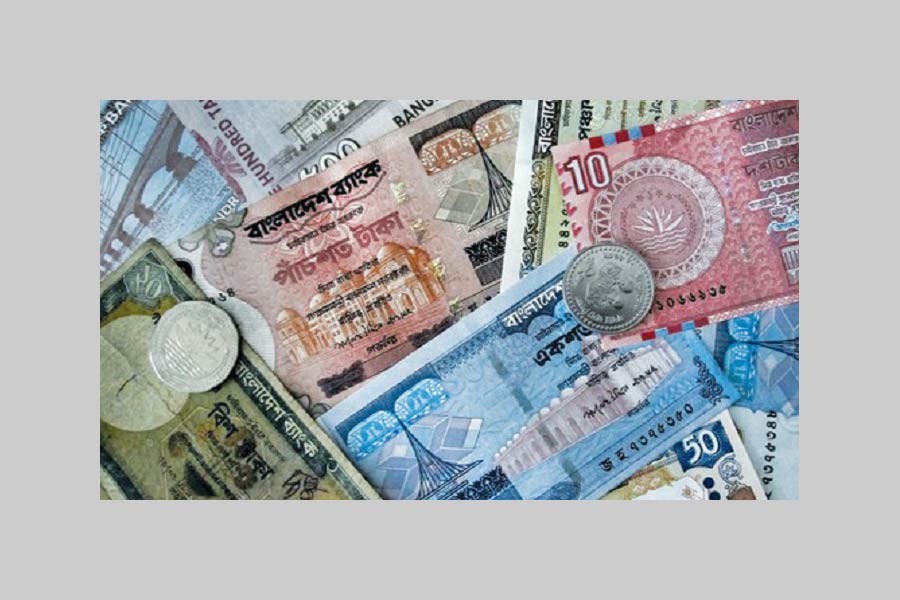The current liquidity crisis that has afflicted the economy has generated much debates and discussions. The government and the Bangladesh Bank (BB) were supposed to take necessary initiatives and they did take some policy measures. The measures are: (a) reverting to Advance-Deposit Ratio (ADR) of 85 per cent from 83.5 per cent declared previously; (b) reducing the Cash-Reserve Ratio (CRR) by 1.0 per cent; and (c) moving 50 per cent of government deposits lying with the public banks to private banks for easing the crisis. Whether these will solve the problem depends on proper identification of the causes behind this grim situation of liquidity which is still posing a threat to macroeconomic stability, and thereby, to sustainable growth.
A number of reasons existed which led to the present harsh reality. Let us look at the problem at first from the supply side. As deposit interest rates declined to a low level, people started withdrawing their deposits from the banks as alternative investment options like investment in the stock market and other fixed assets proved to be more lucrative. This was indicated by the rising prices of shares in the stock market during the second half of the last calendar year. Besides, the government had been directly borrowing from people through Savings Certificates for a number of years at a higher rate of interest compared to what was available in the banks. Therefore, the deposits fell significantly, which in turn led to lesser reserves in the central bank. In fact, while deposit growth rate stood at approximately 13 percent in December 2016, it declined to about 11 percent in October 2017. As a result, the base money of BB eroded to some extent. Again, with falling deposit rates, banks faced a crisis to stay within the set limit of ADR fixed by BB.
On the demand side, the much-discussed government and government-sponsored large private projects as well as the public-private partnership (PPP) projects required long-term financing, where banks came into play to supply the credit. BB data shows that between January and December 2017, banks received a total deposit of around Tk 850 billion (85,000 crore), whereas disbursement climbed up to around Tk 1,250 billion (1,25,000 crore). As demand increased coupled with the decrease in loanable funds, the cost of loans, viz., lending rates soared to two digits. However, the country was not prepared for this sort of financing because appropriate alternative tools for financing were unavailable to the government. In many countries, such big-scale financing is generally funded by bond and/or stock markets, or by the sovereign funds. The initiatives for developing viable bond and capital markets that we witnessed in the 1990s, it seems, have ebbed out. As a result, Bangladesh is not yet able to absorb the benefits from such sources till now.
In this backdrop, as the right kind of supervision and oversight were absent from the central bank, classified loans also rose significantly putting additional pressure on the supply of loanable funds, and reduced the space for providing advances. As banks became more and more vulnerable to remaining within the newly declared ADR ceiling of 83.5 per cent, BB was compelled to revert to the old rate of 85 per cent until December 2018.
Now, the question is whether the policy interventions by the government and the BB would alleviate the problems related to liquidity in the financial market and concomitant rise of lending rates? At first, the public banks were already in a vulnerable position and mere redistribution of their funds to the private banks could have no effect on the overall supply of loanable funds whatsoever. Furthermore, these sick public banks were likely to get sicker. Then, the two initiatives relating to ADR and CRR may also confront grave menaces. Although these will cushion the banks for the time being, in the long run it will not yield the desired results within the current financial framework. As a matter of fact, it is not reasonable to keep two prices for the same product, which is currently observed in the loanable fund market of the country in terms of Savings Certificate Rates and deposit interest rates. If the rates for Savings Certificates are kept constant, the deposit interest rate would sooner or later move upward towards the former. Therefore, the rates of interest for Savings Certificates must be aligned to the rates offered by the banks. Moreover, we need to take immediate initiatives to halt the downward sliding of Current Account deficit. Eroding of Net Foreign Assets (NFA) will reduce the money-base, and negatively impact the overall supply of loanable funds. Without proper supervision, this extra liquidity may become classified once again as has been seen during previous months.
And, finally, the government and the BB alike must look into the disciplinary and governance issues of the financial system as a whole, along with finding alternatives for financing the mega projects. Here, it is to be noted that fiscal policy can be a tool of political economy, but not the monetary policy. So, the financial sector and monetary policy must be kept apolitical. Hence, a synergistic coordination between the fiscal and monetary policies is the only path that our economy may bank on, which will ensure stable financial sector governance together with development of appropriate instruments for financing long-term projects.
Md. Monirul Islam is Assistant Professor of Bangladesh Institute of Governance and Management (BIGM), [email protected]; Asif Hossain is Assistant Director (Research Wing) of BIGM,


